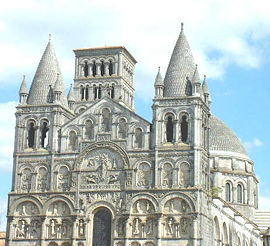Angoulême
|
Commune of Angoulême |
|
| Location | |
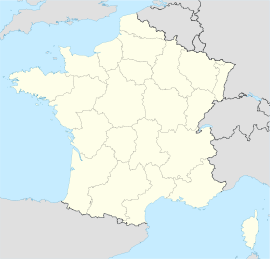 Angoulême
|
|
| Administration | |
|---|---|
| Country | France |
| Region | Poitou-Charentes |
| Department | Charente |
| Arrondissement | Angoulême |
| Intercommunality | Angoulême |
| Mayor | Philippe Lavaud (2008–2014) |
| Statistics | |
| Elevation | 27–130 m (avg. 100 m) |
| Land area¹ | 21.85 km² |
| Population² (1999) |
43,171 |
| - Density | 1976/km² (1999) |
| Miscellaneous | |
| INSEE/Postal code | 16015/ 16000 |
| 1 French Land Register data, which excludes lakes, ponds, glaciers > 1 km² (0.386 sq mi or 247 acres) and river estuaries. | |
| 2 Population sans doubles comptes: residents of multiple communes (e.g., students and military personnel) only counted once. | |
Angoulême is a commune in western France and capital of the Charente department.
Contents |
History
Early history
Angoulême (Iculisma or Ecolisna, later Angoulesme) was taken by Clovis from the Visigoths in 507. In the 9th century, it was invaded and plundered by the Normans.
In 1360 Angoulême was surrendered by the Treaty of Brétigny to the English; they were, however, expelled in 1373 by the troops of Charles V, who granted the town numerous privileges. It suffered much during the French Wars of Religion, especially in 1568 after its capture by the Protestants under Coligny.
The Counts and dukes of Angoulême were established in the 9th century. The most important of the early counts was William Taillefer, whose descendants held the title until the end of the 12th century. Withdrawn from the descendants on more than one occasion by Richard Coeur-de-Lion, the title passed to King John of England at the time of his marriage to Isabella of Angoulême, daughter of Count Adhémar. When, widowed, Isabella subsequently married Hugh X in 1220, the title passed out to the Lusignan family, counts of Marche. On the death of Hugh XIII in 1302 without issue, his possessions passed to the crown.
In 1394 the countship came to the house of Orléans. One of its members, Francis I became king of France in 1515 and raised the countship to the rank of duchy in favour of his mother Louise of Savoy. The duchy, now crown land and only nominally a duchy, thereafter was passed on within the ruling house of France. One of its holders was Charles of Valois, "natural" (or illegitimate) son of Charles IX. The last duke of Angoulême was Louis-Antoine, eldest son of Charles X of France. Louis-Antoine died in 1844.
20th century history
Angoulême was marginally to the west of the demarcation line during World War II, and thus occupied by the Germans. Being on a main railway line with extensive marshalling yards, it was of strategic importance and the scene of much activity by the French Resistance. Late in the war, the Allies used American B-25's to bomb the railway station to disrupt German supply lines to the north, where the battle was raging in Normandy.
A museum in the commune is devoted to the Resistance and the deportations of Jewish and political prisoners. A statue near the station commemorates the deportations to the concentration camps. The survivors of the so-called "Cockleshell Heroes", notable for their daring raid by canoe on the German U-Boat base at Bordeaux, made their escape across country to a safe house at Ruffec just north of Angoulême. This is now the site of a shop featuring British goods. The Monument to the Resistance is at Chasseneuil to the east.
Geography
Angoulême is located 134 km or 83.8 miles (134.9 km) N.N.E. of Bordeaux on the railway between Bordeaux and Poitiers.
The town proper occupies an elevated promontory, washed on the north by the Charente River and on the south and west by the Anguienne, a small tributary. The more important of the suburbs lie towards the east, where the promontory joins the main plateau. The countryside to the north and west is rather flat agricultural land, whereas to the east and south it is more forested and hilly. It is the north-west extremity of the Périgord Vert.
Main sights
In place of its ancient fortifications, Angoulême is encircled by boulevards above the old city walls, known as the Remparts, from which fine views may be obtained in all directions. Within the town the streets are often narrow. Apart from the cathedral and the hôtel de ville, the architecture is of little interest to the purists. However, the "old town" has been preserved, maintained and largely reserved for pedestrians. It has a cobbled restaurant quarter, with some interesting galleries and boutiques, appreciated by locals and visitors.
Angoulême Cathedral, dedicated to Saint Peter, is a church in the Byzantine-Romanesque style. Dating from the 11th and 12th centuries, it has undergone frequent restoration. It was partly rebuilt in the latter half of the nineteenth century by the architect Paul Abadie. The façade, flanked by two towers with cupolas, is decorated with arcades filled in with statuary and sculpture, the whole representing the Last Judgment. The crossing is surmounted by a dome. The north transept is topped by a fine square tower over 160 ft (49 m). high.
The hôtel de ville, also designed by Abadie, is a handsome 19th century structure. It preserved and incorporated two towers of the chateau of the counts of Angoulême, on the site of which it was built. It contains museums of paintings and archaeology. [Hotel de Ville:[1]
Tours of the town include the "murs peints", various walls painted in street-art cartoon style, a feature of Angoulême and related to its association with the "bande dessinée", the comic strip. The attractive covered market "Les Halles", on the site of the old Jail, was restored and refurbished in 2004 and is a central part of city life.
Economy
Angoulême is a centre of the paper-making and printing industry, with which the town has been connected since the 14th century. Papermaking is favoured because of the uniform temperature and volume of the water year-round, partly due to the River Touvre, which joins the Charente River at Angoulême. The Touvre is the second largest underground source in France after the River Sorgue (La Fontaine de Vaucluse).
It is an unusual sight to see the Touvre, a full-blown river, emerging from the head of the valley at Ruelle. There is a trout fishery at the source and a pumping station to supply the drinking water needs of Angoulême. Most of the paper mills are situated on the banks of watercourses in the neighbourhood of the town. Cardboard for packaging, as well as fine vellum for correspondence, have been produced in quantity.
The best known export is RIZLA+ cigarette roll-up paper, a combination of riz (rice paper) and LaCroix, after Monsieur LaCroix the founder. "Le Nil" is another local brand of roll-up paper, named, not after the Nile in Egypt, but a small tributary of the Charente River.
The economy of the modern town also relies on its various festivals. For example, the printers and paper-makers, whose industry relied on intricate machinery, became skilled mechanics and amongst the first to become fascinated with the motor car in the late 19th century. Motor trials were held regularly, starting on the long straight road through Puymoyen, now a suburb. Monsieur LaCroix (of RIZLA+) was a celebrated motorcycle racer. The Paris-Madrid road race of 1903, notorious for its cancellation due to numerous deaths, passed through Angoulême. Marcel, one of the brothers Renault, was one of the victims. The place of his death is marked by a memorial on road RN10 to Poitiers.
The town has been closely associated with motor trials and racing. The Circuit Des Remparts (see below) is held annually, the last such street-racing course in France, besides Pau and Monaco. As well as local heroes, famous racing drivers such as Fangio, Gonzalzes, Wimille, Veyron and Trintignant have been regular participants. The famous cars they drove frequently are presented at the modern event. The hotel and restaurant trade receives a considerable boost from the races.
Subsidiary industries, such as the manufacture of machinery, electric motors and wire fabric, are of considerable importance. Angoulême is the most inland navigable port on the Charente River The traditional river boat is the Gabare. Iron and copper founding, brewing and tanning also continue. The manufacture of gunpowder, confectionery, heavy iron goods, gloves, boots and shoes (including the traditional pantoufle carpet slippers) and cotton goods are also important. There is wholesale and retail trade in wine, cognac and building-stone.
Angoulême is reputed to have the largest square-footage of supermarket ("grand surface") area per head of population in all France. It has six hamburger restaurants (four McDonalds and two Quick).
Transportation

The main line of the Paris-Bordeaux railway passes through a tunnel beneath the town and is due for large scale refurbishment to reduce journey times still further. The new high speed link between Tours and Bordeaux has been approved and will by-pass the town centre to the West. It is due to open in 2013.
Angoulême Brie-Champniers airport, newly named Angoulême-Cognac airport, is situated 9.5 km NE of the city centre in Champniers, just off the N10. In spite of the termination of the air service to Lyon, the airport is undergoing improvement, with the runway extended 50 metres to accommodate the Boeing 737. The terminal is having a new restaurant and shops added in order to greet flights from the UK budget airlines in Spring 2008. [2]. As of September 2008 Ryanair flies 3 times a week from Stansted (summer only) on Tuesday, Thursday and Saturday.
City of Festivals
Angoulême, along with paper and printing, has long been associated with animation, illustration and the graphic arts. The national Musée de la Bande Dessinée (comic strip museum, the CNBD) is situated in an ambitious paper-mill conversion down by the river. A new museum dedicated to the motion picture opens Summer 2007 at the newly restored "chais" on the riverside at Saint Cybard. The famous Angoulême International Comics Festival takes place for a week every year in January and receives nearly a quarter of a million visitors from around the world.
Smaller, yet most influential is FITA, held each December. FITA stands for Forum International des Technologies de l’Animation – International Forum for Animation Technologies. The event was started in 1998. The purpose of the event is to gather 250 – 300 French professionals from animation, effects, post-production and game development studios – SFX supervisors, head of studios, animators, technical directors - to come and listen to internationally renowned speakers on the latest advances and new ideas in entertainment technology. Speakers from Hollywood and beyond are attracted not only by the opportunity to speak, but also to experience the old world charm of the city.
The Circuit Des Remparts motor racing event, with its historic street circuit around the ramparts and past the Cathedral, is re-enacted on the Sunday of the mid weekend in September, and is the world's largest gathering of pre-war Bugatti racing machines, usually around 30 cars of fabulous value, many being examples of the legendary T35, the Ferraris of their day, which their owners "demonstrate" at full speed around the twisting cicuit, complete with hairpin bends and hillclimbs. British vintage and classic cars are also in abundance, most having been driven to the event. The Saturday of the "Remparts" weekend includes a "touristic" rally (as opposed to a speed event) for classic and sporting cars, around the picturesque Cognac growing area. Tickets include a big lunch and a large party and prize-giving in Les Halles in the evening.
With the Gastronomades festival at Christmas, Music Metisse in May and Piano de Valois in October, Angoulême truly lives up to its name "City of Festivals".
A new exhibition centre (Le Parc Des Expos) and a new shopping mall at the Champ de Mars in the town centre (opening Sept/Oct 2007) are the latest additions to a rapidly growing city.
Angoulême is the seat of a bishop, a prefect, and an Assize court. Its public institutions include tribunals of first instance and of commerce, a council of trade-arbitrators, a chamber of commerce and a branch of the Bank of France. It also has several lycées (including the Lycee de l'Image et du Son d'Angouleme or LISA - High School of Image and Sound), training-colleges, a school of artillery, a library and several learned societies.
Angoulême was the finish of Stage 18 and Stage 19 (ITT) in the 2007 Tour de France.
Miscellaneous
Births

Angoulême was the birthplace of:
- Mellin de Saint-Gelais (ca. 1491-1558), poet
- Marguerite de Navarre (1492-1549), wife of Henry II of Navarre
- Jean-Louis Guez de Balzac (1594-1654), author
- Marc René, marquis de Montalembert (1714-1800), military engineer and writer
- Charles Gaudichaud-Beaupré (1789-1854), botanist
- Maurice Duverger (born 1917), jurist
- Charles-Augustin de Coulomb (1736-1806), physicist
- Pierre-Jean Rémy (born Jean-Pierre Angremy 1937), writer, member of the Académie française.
Twin towns
Angoulême is twinned with:
 Bury, United Kingdom
Bury, United Kingdom Chicoutimi, Canada
Chicoutimi, Canada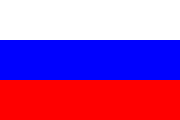 Gelendzhik, Russia
Gelendzhik, Russia Hildesheim, Germany
Hildesheim, Germany Hoffman Estates, United States
Hoffman Estates, United States Ségou, Mali
Ségou, Mali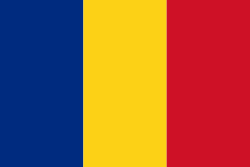 Turda, Romania
Turda, Romania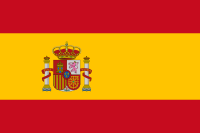 Vitoria-Gasteiz, Spain
Vitoria-Gasteiz, Spain
See also
- Angoulême International Comics Festival
- Counts and dukes of Angoulême
- Angoumois
- Bishopric of Angoulême
- Poitou-Charentes
Sources, external links and references
- International Comics Festival website
- Town council website (in French)
- Visiting Angoulême
- Picture of the Cathedral
- Circuit des remparts
- This article incorporates text from the Encyclopædia Britannica Eleventh Edition, a publication now in the public domain.
- This article incorporates text from the public-domain Catholic Encyclopedia of 1913.
- [3]
|
|||||||||||
|
|||||
